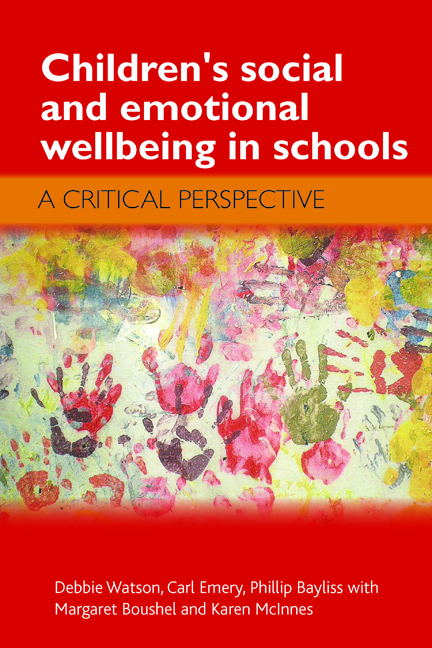Chapter 6 - Inclusion in schools
Published online by Cambridge University Press: 01 September 2022
Summary
Introduction
Chapter 2 established a conceptual framework for understanding wellbeing and its relationships to other concepts on a Deleuzian ‘plane of consistency’. In Chapter 5, we explored the relationships between flourishing, happiness and wellbeing, and how these concepts are used interdependently to cross-refer to each to provide an understanding of wellbeing and, as far as measurement of the concept is concerned, its operationalisation as a concept.
In a similar way that flourishing, happiness and wellbeing are interrelated, so is wellbeing inextricably linked with concepts of inclusion. In the speeches of Tony Blair when he was Prime Minister, the theme of social exclusion was a central policy driver, and the focus for social policy was its corollary, social inclusion. Where such policy foundered on intractable and entrenched problems experienced by the individual, the shift towards education as a way of tackling entrenched problems shifted discussion of education within what is called the ‘standards debate’ and the role of schools in reducing social exclusion and promoting social inclusion.
‘Inclusion’ and ‘exclusion’ form the binary opposites underpinning social policy. Where ‘social exclusion’ is focused on the social body of children and young people who, through lack of achievement, do not gain access to the benefits of society, the social body represents difference as experienced through social, cultural or economic circumstances: the poor, ethnic minorities, youth subcultures, disabled children and so on.
A further set of binary opposites also exists: ‘integration’ and ‘segregation’. This binary represents some form of human agency (government) that creates social groupings (sometimes through force). Thus, internationally, the apartheid regime in South Africa forcibly segregated black and white populations; Australian policies forcibly segregated white and Aboriginal populations; while in the US, civil rights legislation promoted integration (integrated schools in Alabama for black and white children); and, more recently, the British government promoted the development of integrated schools in Northern Ireland to reduce the tensions between Catholic and Protestant communities.
There is a sense in which inclusion relates to Nussbuam and Sen's discussion of functions and capabilities, where inclusion is a function, which promotes capabilities (and social cohesion), while integration relates to government policies, not necessarily dependent on the promotion of human capability. We agree with White (2002, p 442) who stated that: ‘a key aim of education is to help students to lead personally fulfilling lives.
- Type
- Chapter
- Information
- Children's Social and Emotional Wellbeing in SchoolsA Critical Perspective, pp. 93 - 110Publisher: Bristol University PressPrint publication year: 2012



